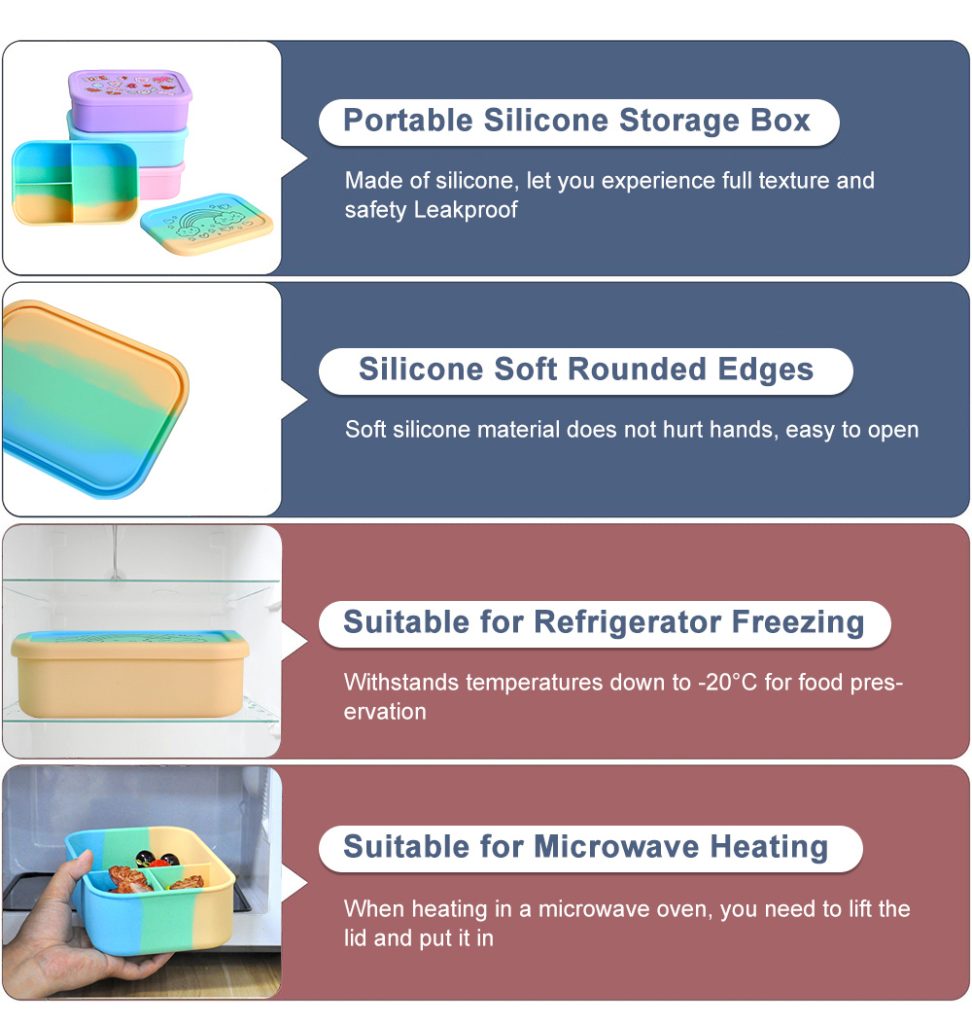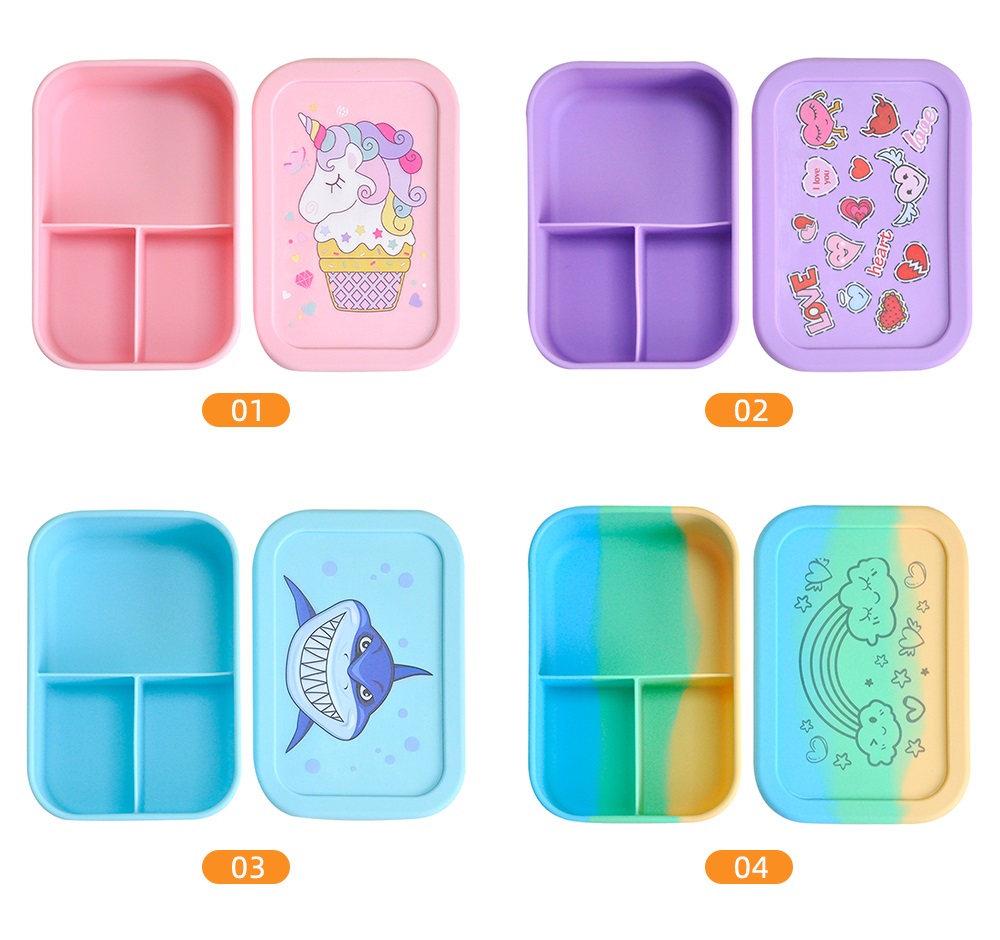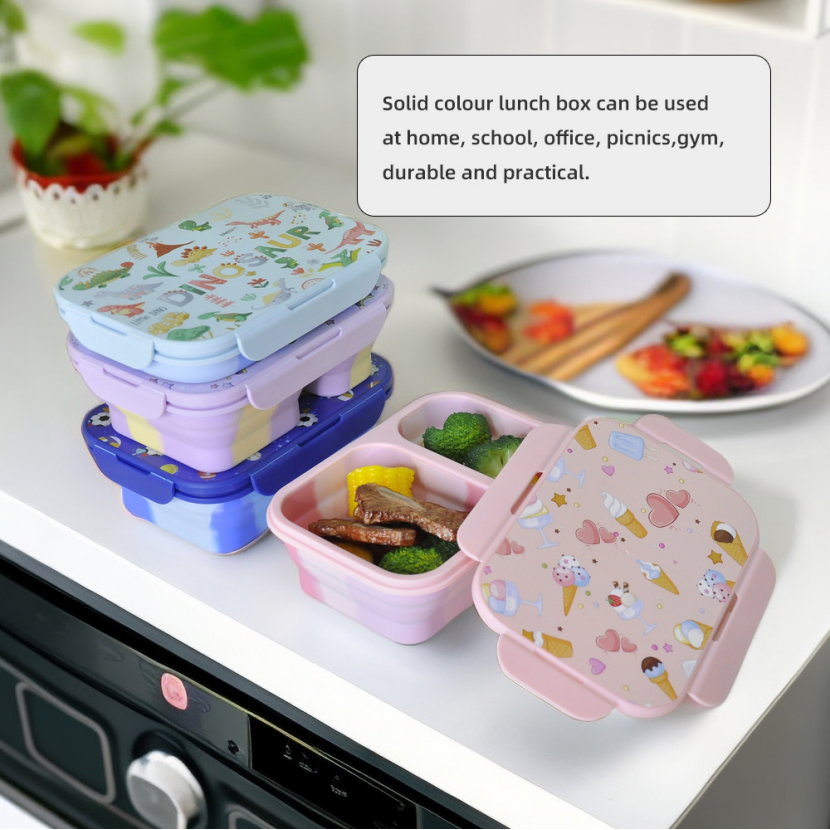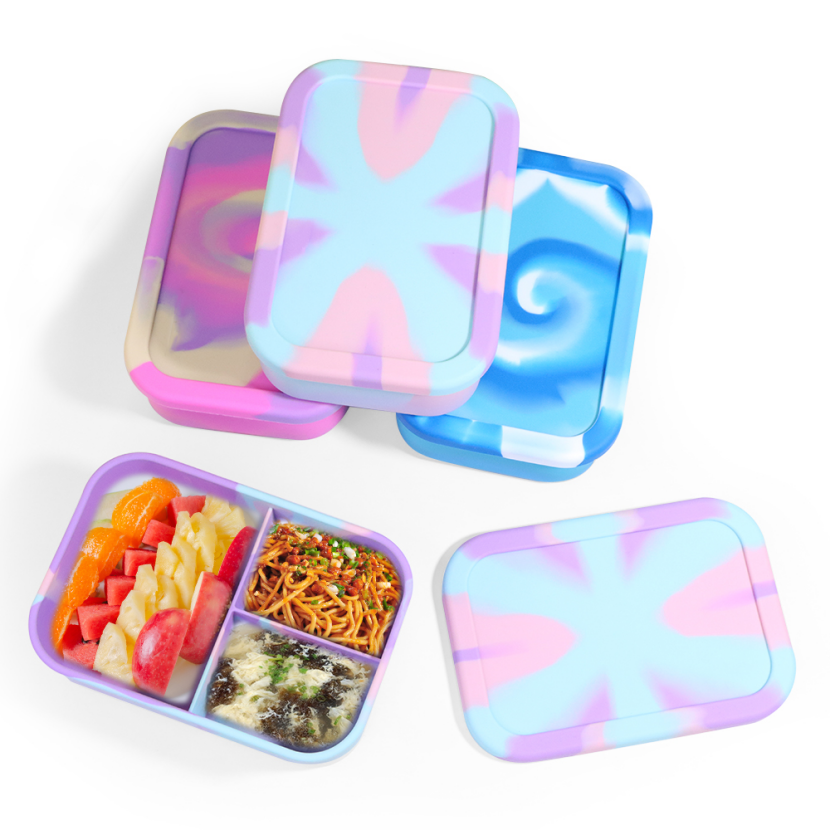실리콘 도시락이 아이들의 점심시간을 지루함에서 재미로 바꿔줄 수 있는 방법을 소개합니다.
실리콘 도시락의 매력
1. 안전 및 내구성
실리콘 도시락은 식품 등급의 품질이 뛰어나며, 무독성 및 BPA가 함유되지 않아 자녀의 음식에 안전하게 사용할 수 있습니다. 내구성이 뛰어나 일상적인 사용과 전자레인지 가열, 식기세척기 세척에도 견딜 수 있어 바쁜 가족에게 오래도록 사용할 수 있는 제품입니다.


2. 환경 친화적 선택
일회용 플라스틱을 줄이는 것이 점점 더 강조되고 있는 요즘, 실리콘 도시락은 친환경적인 대안을 제시합니다. 재사용이 가능하기 때문에 폐기물을 크게 줄일 수 있으며, 내구성이 뛰어나 일회용 제품에 비해 탄소 발자국이 적습니다. 이 점을 강조하여 지속 가능한 제품을 중시하는 환경에 민감한 소비자들에게 어필하세요.
창의적인 음식의 순간을 위한 실리콘 도시락
1. 예술적 Expression B입력 Design
어린이 도시락은 일반적으로 다양한 만화 이미지, 귀여운 동물, 활기찬 계절 테마 또는 즐거운 휴일 테마 등 인기 있는 다양한 색상과 패턴을 사용하여 점심을 생동감 있고 재미있게 만들 수 있습니다.


2, 도시락에 어울리는 일반적인 레시피 매칭
다음은 실리콘 도시락을 위해 특별히 고안된 영양가 있고 어린이 친화적인 레시피 시리즈입니다. 다음과 같은 다양한 옵션이 포함되어 있습니다:
- *단백질 보물*: 미니 타르트, 칠면조 부리토, 두부 스타.
- *야채 모험*: 당근 꽃, 오이 애벌레, 방울토마토 부케.
- 과일 판타지*: 과일 꼬치, 허니듀 멜론 볼, 요거트에 찍어 먹는 딸기 하트.
- *곡물 에센셜*: 통곡물 샌드위치, 주먹밥, 파스타 샐러드.


각 레시피는 영양적으로 균형 잡혀 있으며 다양한 식단(예: 글루텐 프리, 락토오스 프리)에 쉽게 적용할 수 있습니다.
실용적인 장점과 사용 팁
1. 간편한 음식물 분리수거
실리콘 도시락의 구획화된 디자인은 다양한 음식을 적절한 양으로 분리하여 부모가 균형 잡힌 식습관을 가질 수 있도록 도와줍니다. 또한 아이들이 새로운 음식을 시도하고 어릴 때부터 건강한 식습관을 기를 수 있도록 도와줍니다.


2. 여행에 편리함
실리콘 도시락은 새지 않고 가벼워 학교 점심, 피크닉, 드라이브 여행, 어린이집 간식 등에 이상적입니다. 도시락을 효율적으로 포장하고 운반하는 방법에 대한 팁을 제공하여 냉장고 밖에 몇 시간 동안 보관해도 음식이 신선하고 맛있게 유지되도록 합니다.
실리콘 도시락은 도시락 용기일 뿐만 아니라 창의력을 자극하고 건강한 식습관을 기르며 친환경적인 라이프스타일을 실천할 수 있는 도구이기도 합니다. 실리콘 도시락의 재미와 기능성을 즐기고 온 가족이 함께하는 즐거운 배움의 시간이 되는 식사 시간을 경험해보세요!


